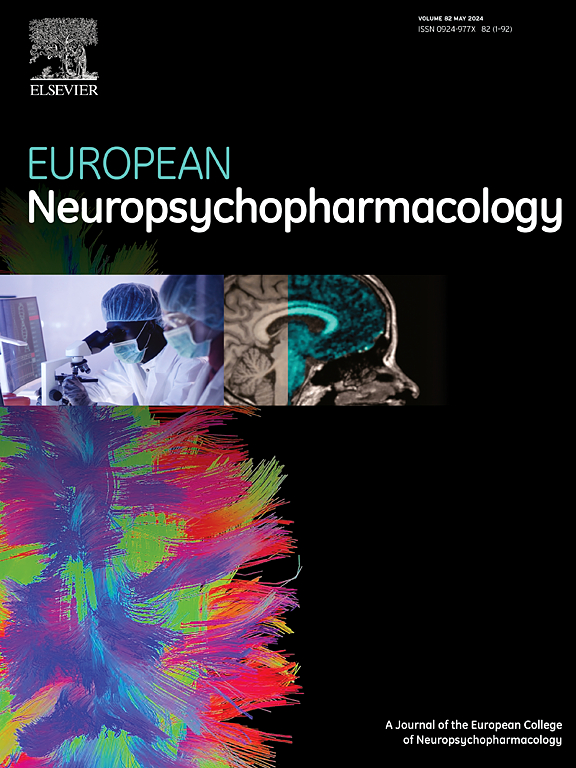Whole-brain functional neuroimaging correlates of cognitive flexibility impairments in people with mental disorders: A transdiagnostic coordinate-based meta-analysis
IF 6.1
2区 医学
Q1 CLINICAL NEUROLOGY
引用次数: 0
Abstract
Introduction
Set-shifting skills allow individuals to flexibly adapt their behavior against environmental feedback. Impairments of this cognitive control process represent the core features of heterogeneous mental disorders. However, it is unclear whether the neural mechanisms of set-shifting impairments are shared across different mental disorders.
Materials and methods
We systematically screened the neuroimaging literature and conducted a coordinate-based meta-analysis. Of 1930 publications, 22 functional neuroimaging studies investigating neural response differences during the performance of set-shifting paradigm on the scanner in individuals with a mental disorder, including schizophrenia, depression, anxiety disorder, neurodevelopmental disorders, eating disorders, obsessive-compulsive disorder, behavioral addiction were selected.
Results
We found significant hyperactivation responses during set-shifting in the right medial frontal/anterior cingulate gyrus, the right superior parietal lobule, and the left superior temporal gyrus in patients with schizophrenia, autism spectrum disorders, or generalized anxiety disorder.
Conclusions
Our findings suggest a common substrate of increased activity in the frontoparietal network (FPN) across mental disorders during set-shifting. FPN activation responses may represent a biomarker of altered cognition across traditional nosographic categories.
精神障碍患者认知灵活性损伤的全脑功能神经影像学相关性:一项基于跨诊断坐标的荟萃分析
设置转换技能允许个人根据环境反馈灵活地调整自己的行为。这种认知控制过程的障碍是异质性精神障碍的核心特征。然而,目前尚不清楚设置转移障碍的神经机制是否在不同的精神障碍中共享。材料和方法我们系统地筛选了神经影像学文献,并进行了基于坐标的meta分析。在1930篇论文中,选取了22篇功能性神经影像学研究,调查了精神障碍患者(包括精神分裂症、抑郁症、焦虑症、神经发育障碍、饮食障碍、强迫症、行为成瘾)在扫描仪上进行设置转移范式时的神经反应差异。结果我们发现,在精神分裂症、自闭症谱系障碍或广泛性焦虑症患者中,右侧内侧额叶/前扣带回、右侧顶叶上叶和左侧颞上回的设置移位过程中存在显著的过度激活反应。结论我们的研究结果表明,在设置转换过程中,精神障碍患者的额顶叶网络(FPN)活动增加有一个共同的基础。FPN激活反应可能代表了传统医院分类中认知改变的生物标志物。
本文章由计算机程序翻译,如有差异,请以英文原文为准。
求助全文
约1分钟内获得全文
求助全文
来源期刊

European Neuropsychopharmacology
医学-精神病学
CiteScore
10.30
自引率
5.40%
发文量
730
审稿时长
41 days
期刊介绍:
European Neuropsychopharmacology is the official publication of the European College of Neuropsychopharmacology (ECNP). In accordance with the mission of the College, the journal focuses on clinical and basic science contributions that advance our understanding of brain function and human behaviour and enable translation into improved treatments and enhanced public health impact in psychiatry. Recent years have been characterized by exciting advances in basic knowledge and available experimental techniques in neuroscience and genomics. However, clinical translation of these findings has not been as rapid. The journal aims to narrow this gap by promoting findings that are expected to have a major impact on both our understanding of the biological bases of mental disorders and the development and improvement of treatments, ideally paving the way for prevention and recovery.
 求助内容:
求助内容: 应助结果提醒方式:
应助结果提醒方式:


